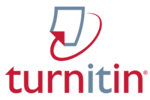The Influence of the Critical-Collaborative Learning Model (CCLM) on Students’ Creative Thinking Ability
DOI:
https://doi.org/10.70211/sakaguru.v1i2.151Keywords:
Creative Thinking Ability, Critical-Collaborative Learning Model, Student Achievement.Abstract
This study aims to determine the effect of the Critical-Collaborative Learning Model (CCLM) on students' creative thinking abilities in thermodynamics material. The research employed a quantitative approach using a quasi-experimental method. The subjects of this study were grade XI students of Madrasah Aliyah Negeri (MAN), with data collection instruments in the form of essay questions designed to measure students' creative thinking abilities. The results indicated that the average score of the experimental class (85.5%) was higher than that of the control class (68.9%). The data were tested for normality and homogeneity, showing that the data were normal and homogeneous. Subsequently, the Independent Sample T-test revealed a significance level of 0.000, which is less than Sig. < 0.05, meaning that H0 is rejected and H1 is accepted. Thus, it can be concluded that the use of the Critical-Collaborative Learning Model (CCLM) significantly affects students' creative thinking abilities.
References
M. A. Syafruddin, A. S. Jahrir, A. Yusuf, Ikadarny, and A. Yusuf, “Peran Pendidikan Jasmani Dan Olahraga Dalam Pembentukan Karakter Bangsa,” J. Ilm. STOK Bina Guna Medan, vol. 10, no. 2, pp. 73–83, 2022.
F. D. Novanto, D. Edmilizar, S. Nur, and S. Aini, “Manajemen Kreativitas Untuk Guru Pendidikan Agama Islam Dalam Penerapan Paikem ( Pembelajaran , Aktif , Inovatif , Kreatif Dan Menyenangkan ) Di Kelas IX Sekolah Menengah Pertama Negeri 3 Kec Batang Asam Kab Tanjung Jabung Barat,” vol. 17, no. 2, pp. 59–65, 2024. DOI: https://doi.org/10.51903/e-bisnis.v17i2.1989
M. I. R. Fauzi, E. Z. Rini, and S. Qomariyah, “Penerapan Nilai-Nilai Profil Pelajar Pancasila Melalui Pembelajaran Kontekstual Di Sekolah Dasar,” Confrence Elem. Stud., p. 483, 2023.
R. Hidayat, S. Ag, and M. Pd, Buku Ilmu Pendidikan Rahmat Hidayat & Abdillah.
Z. Zaifullah, H. Cikka, and M. I. Kahar, “Strategi Guru Dalam Meningkatkan Interaksi Dan Minat Belajar Terhadap Keberhasilan Peserta Didik Dalam Menghadapi Pembelajaran Tatap Muka Di Masa Pandemi Covid 19,” Guru Tua J. Pendidik. dan Pembelajaran, vol. 4, no. 2, pp. 9–18, 2021, doi: 10.31970/gurutua.v4i2.70. DOI: https://doi.org/10.31970/gurutua.v4i2.70
I. Magdalena, A. Salsabila, D. A. Krianasari, and S. F. Apsarini, “Implementasi Model Pembelajaran Daring Pada Masa Pandemi Covid-19 Di Kelas Iii Sdn Sindangsari Iii,” J. Pendidik. dan Dakwah, vol. 3, no. 1, pp. 119–128, 2021, [Online]. Available: https://ejournal.stitpn.ac.id/index.php/pandawa
M. Herman, B. Rama, M. A. Bakri, and R. Malli, “Manajemen Pembelajaran Guru Pendidikan Agama Islam dalam Meningkatkan Prestasi Belajar Peserta Didik,” Hikmah, vol. 19, no. 2, pp. 271–280, 2022, doi: 10.53802/hikmah.v19i2.370. DOI: https://doi.org/10.53802/hikmah.v19i2.370
Ubabuddin, “HAKIKAT BELAJAR DAN PEMBELAJARAN DI SEKOLAH DASAR,” Pendidikan, vol. V, no. 1, 2019.
R. P. K. Wardhany, “Media Video Kejadian Fisika Dalam Pembelajaran Fisika Di SMA,” J. Pembelajaran Fis., no. 2301–9794, pp. 1–8, 2014.
D. N. Qomariyah and H. Subekti, “Pendidikan Sains Analisis Kemampuan Berpikir Kreatif: Studi Eksplorasi Siswa Di Smpn 62 Surabaya,” PENSA E-JURNAL Pendidik. Sains, vol. 9, no. 2, pp. 242–246, 2021.
Y. S. Putri and H. Alberida, “Keterampilan Berpikir Kreatif Peserta Didik Kelas X Tahun Ajaran 2021 / 2022 di SMAN 1 Pariaman ( Creative Thinking Skills Class X Students for the 2021 / 2022 Academic Year at SMAN 1,” vol. 08, pp. 112–117, 2022. DOI: https://doi.org/10.22437/bio.v8i2.17356
D. Restriani Adiwijayanti, E. Yusmin, and Astuti, “Kemampuan Berpikir Kreatif Ditinjau Dari Kemampuan Analogi Dalam Menyelesaikan Masalah Open-Ended Di Smp,” pp. 78–400, 2019.
S. Johari, Teori Pembelajaran, vol. 1. 2018.
H. E. Wahyuni and Irwandani, “Transformation of Education at State Elementary School 1 Nunggalrejo through the ‘SIKOP’ Program (Santun, Inovatif, Kolaboratif, Obyektif, and Profesional),” SAKAGURU J. Pedagog. Creat. Teach., vol. 1, no. 1, pp. 1–16, May 2024, doi: 10.70211/sakaguru.v1i1.42. DOI: https://doi.org/10.70211/sakaguru.v1i1.42
M. L. Chakim, “Strategi Pembelajaran dalam Menghadapi Tantangan Era Revolusi Industri 4.0,” Semin. Nas. Pascasarj. 2019, vol. 2, no. 1, pp. 469–473, 2019.
Irwandani, A. Suyatna, E. Y. Haenilah, and D. Maulina, Model Pembelajaran Kritis Kolaboratif (Critical-Collaborative Learning Model (CCLM)). Ril Press, 2023.
V. Williyanti, “Development Massive Open Online Courses (MOOCs) Based on Moodle in High School Physics Static Electricity,” J. Pembelajaran Fis., vol. 10.1, p. 57, 2019. DOI: https://doi.org/10.23960/jpf.v10.n1.202206
R. Hasan, M. Lukitasari, S. Utami, and A. Anizar, “The activeness, critical, and creative thinking skills of students in the Lesson Study-based inquiry and cooperative learning,” JPBI (Jurnal Pendidik. Biol. Indones., vol. 5, no. 1, pp. 77–84, Mar. 2019, doi: 10.22219/jpbi.v5i1.7328. DOI: https://doi.org/10.22219/jpbi.v5i1.7328
Yuberti dan Antomi Saregar, Pengantar Metodologi Penelitian Pendidikan Matematika Dan Sains. AURA CV. Anugrah Utama Raharja, 2020.
N. Hasanah, Y. Suryana, and A. Nugraha, “PEDADIDAKTKA: JURNAL ILMIAH PENDIDIKAN GURU SEKOLAH DASAR Pengaruh Metode Eksperimen terhadap Pemahaman Siswa tentang Gaya dapat Mengubah Gerak suatu Benda,” All rights Reserv., vol. 5, no. 1, pp. 127–139, 2018.
D. Firmansyah and Dede, “Teknik Pengambilan Sampel Umum dalam Metodologi Penelitian: Literature Review,” J. Ilm. Pendidik. Holistik, vol. 1, no. 2, pp. 85–114, 2022, doi: 10.55927/jiph.v1i2.937. DOI: https://doi.org/10.55927/jiph.v1i2.937
Downloads
Published
Issue
Section
License
Copyright (c) 2024 Tharissa Anita Putri, Irwandani, Sodikin

This work is licensed under a Creative Commons Attribution 4.0 International License.








